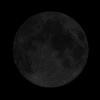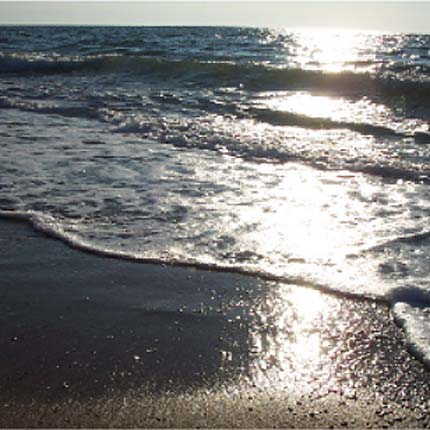Courtesy of EarthSky
A Clear Voice for Science
www.EarthSky.org

 Today – September 8 – features the closest new moon of 2010. Look for higher-than-usual tides along coastlines throughout the world.
Today – September 8 – features the closest new moon of 2010. Look for higher-than-usual tides along coastlines throughout the world.
Because it crosses the sky with the sun during the day, you cannot see today’s extra-close new moon. Yet, it will usher in large tides along the ocean coastlines for the next several days, especially if these high tides are accompanied by strong onshore winds. Why is this moon so close? The reason is that the 2010 September new moon falls on the same date as perigee – the moon’s closest approach to Earth for this month. At perigee today, the moon lies only 357,190 kilometers away. Later this month, the moon will swing to apogee – its farthest point for the month – on September 21. At that time, it will be 406,165 kilometers distant. Why will the tides be higher than usual? At every new moon, the moon is more or less between the Earth and sun. Each month, on the day of new moon, the moon and sun line up to create wide-ranging tides, known as spring tides. High spring tides climb up especially high and on the same day low tides plunge especially low.
Today’s extra-close new moon accentuates these monthly spring tides all the more.
Looking for a tide almanac? EarthSky recommends
The new moon and lunar perigee coincide in cycles of 14 lunar (or synodic) months, because 14 lunar months almost exactly equal 15 returns to perigee. A lunar month refers to the time period between successive new moons, a mean period of 29.53059 days. An anomalistic month refers to successive returns to perigee, a period of 27.55455 days. Hence:
14 x 29.53059 days = 413.428 days 15 x 27.55455 days = 413.318 days
This time period is equal to about 1 year 1 month and 18 days. New moon and perigee will realign again on October 26, 2011, because closest new moons recur in periods of 14 lunar months.
So, if you live along a coastline, watch for high tides over the next several days. In addition, keep an eye on the weather, because storms have a large potential to accentuate the tides.
Written by Bruce McClure
Astronomy Picture of the Day from NASA/JPL
U.S. Naval Observator Astronomical Information center
The York County Astronomical Society
 Print This Post
Print This Post








